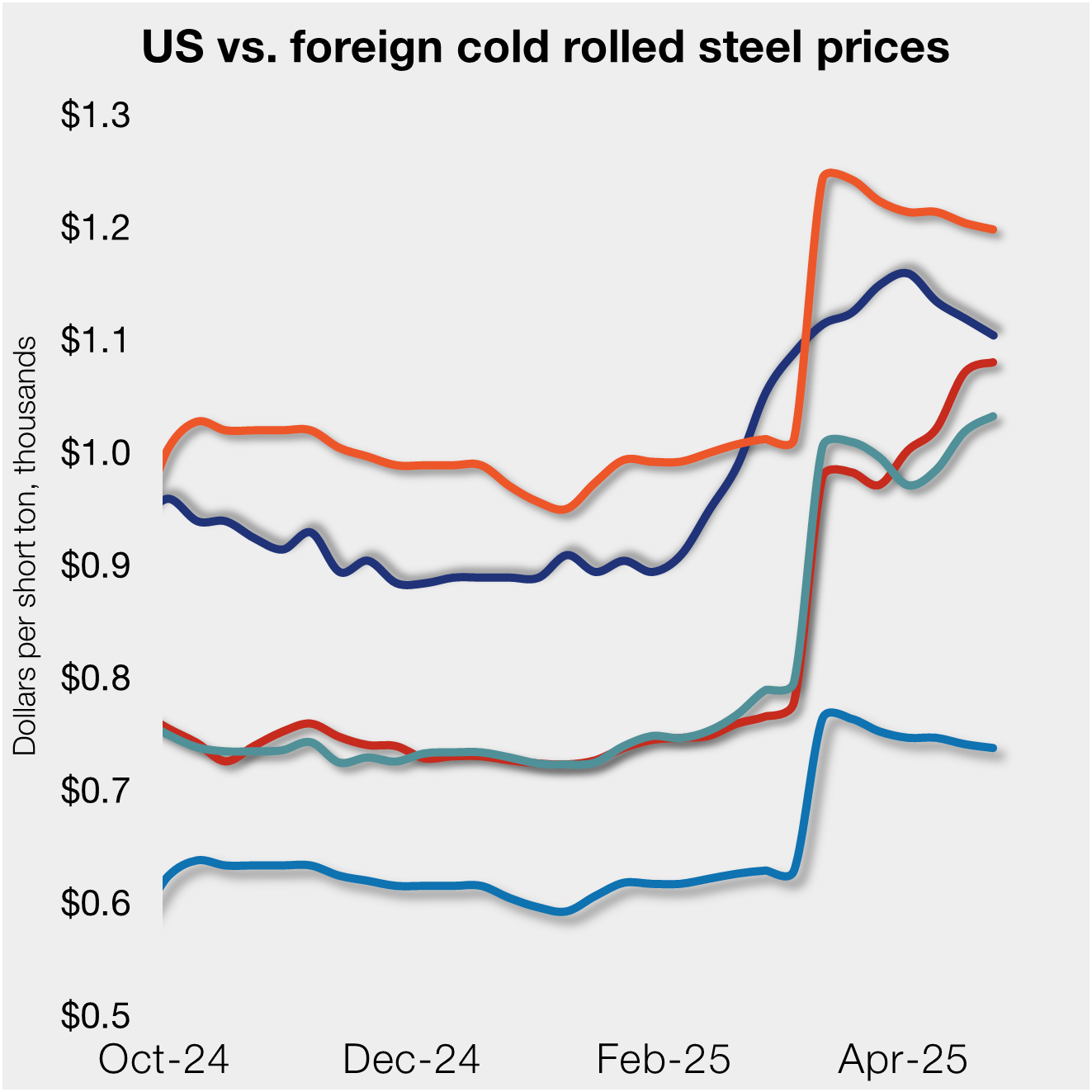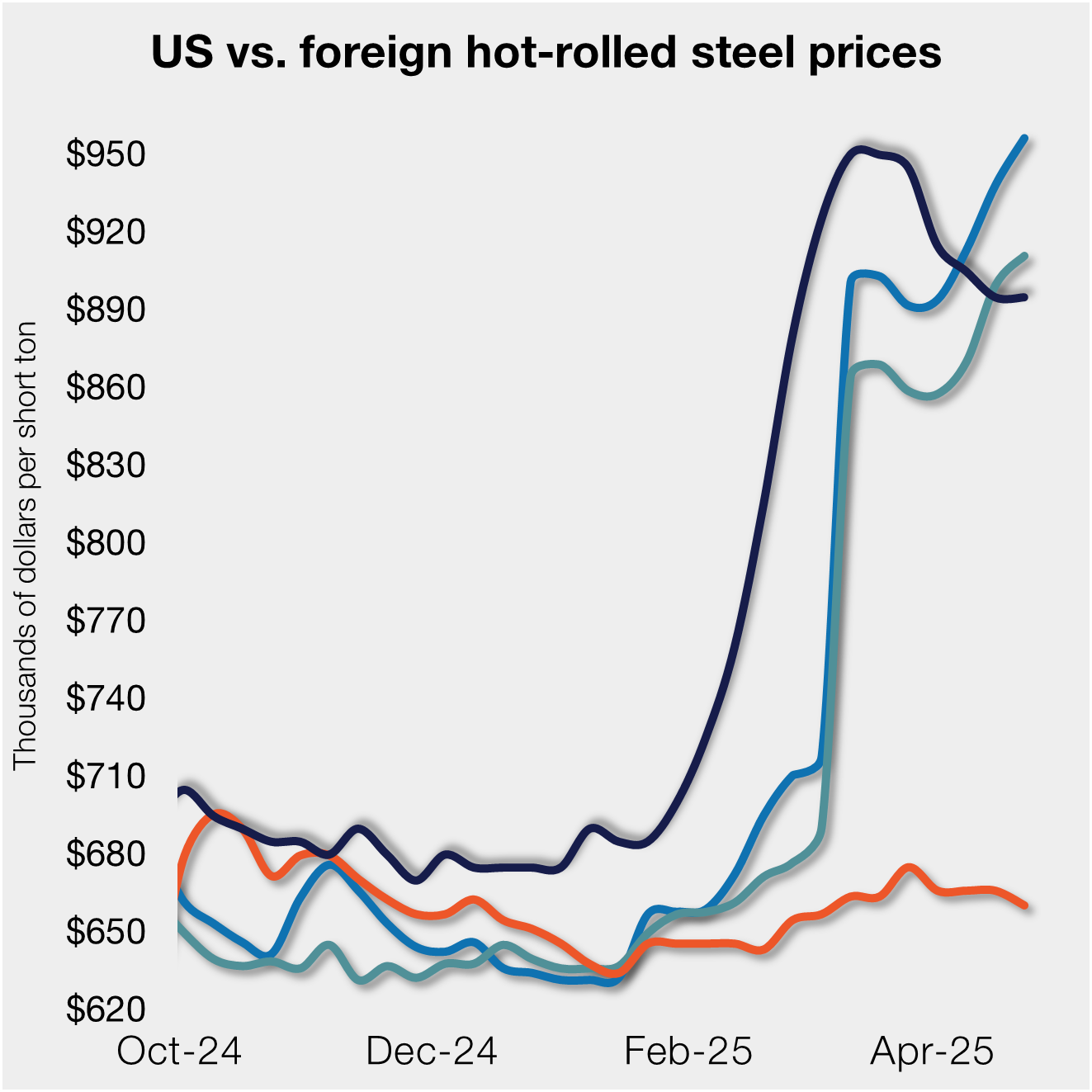Steel Products

CRU: US Sheet Prices Soar, Making the Country a Target for Imports
Written by Ryan McKinley
November 17, 2023
Surging US sheet prices and expanding lead times are making imports more attractive.
The automotive workers’ strike is essentially over, and domestic US sheet prices have rocketed higher alongside lead times. There is little to suggest that the momentum of these price increases will slow over the next month or two, and thus imports have become a very enticing prospect for buyers.
Meanwhile, Brazilian slab export prices fell again m/m despite high raw material costs as import arrivals from China continued.
The US sheet market has tightened even further from our report last month, and mills over the past seven weeks have announced four price increases, totaling $300 per ton for sheet products. Lead times have also been pushed out to seven weeks now for hot-rolled coil (HRC), and our HRC index this week rose month-on-month (MoM) by nearly $190 per ton to $898 per ton.
This sudden, rapid price increase has not been matched in other markets of the world. The premium the US market now carries for HRC over Germany has spiked to roughly $290 per ton, which makes the former market a large target for potential exports from Europe.
What makes this spread more enticing for US buyers is that lead times are well into January for all sheet products. Although imports would likely not arrive until March or April, it is unlikely that US prices will have fallen by enough to cover the difference.
The biggest risk revolves around the lack of a resolution for a trade deal between the US and Europe and the possible reinstatement of Section 232 tariffs.
US import activity for longs has remained subdued, particularly for wire rod. Wire rod contacts noted that some European mills are hesitant to offer material because they have little visibility in terms of freight, tariffs, and input costs.
Rebar offers have gained some traction depending on the region, but most are still not willing to commit to large volumes because of weaker demand and prices domestically. Turkish material remains uncompetitive, so Algeria was the main source of imported material into the US for October outside of North America.
Brazilian Slab Export Prices Have Bottomed
Brazilian slab export prices decreased MoM by 3.6% to $530 per ton FOB Brazil. Sellers tried to stop this price fall as they were under pressure from the high cost of raw materials but a surge in imports from China thwarted this effort. We expect, however, this month to be the price bottom, with increases expected in the coming weeks, as prices in the US have been increasing over the last few weeks.
In terms of trade, October shipments were up, especially to the US. Of the total 711,000 tons exported during the month, 94% was shipped to the North American market, with the remaining 6% going to Europe.
This article was first published by CRU. Learn more about CRU’s services at www.crugroup.com.

Ryan McKinley
Read more from Ryan McKinleyLatest in Steel Products

US rig count up, Canada declines
Oil and gas drilling activity was mixed this week, according to Baker Hughes. US rig counts expanded for a second straight week, while Canadian activity continued its seasonal slowdown of eight consecutive weeks.

US, offshore CRC prices continue to diverge
US cold-rolled (CR) coil prices declined again this week, slipping for a third straight week. Most offshore markets did the opposite, moving higher this week.

S232 lifts EU HR price over US, Asian HR still well behind
Domestic hot-rolled coil prices were flat this week after dropping for four straight weeks. Most offshore markets bucked the trend and gained ground.

SMU Steel Demand Index dips into contraction
SMU’s Steel Demand Index has moved into contraction, according to late April indicators. The slowdown comes in response to growing tariff uncertainty after the index reached a four-year high in late February.

Nucor selects Fives Group for new galv line at CSI
Nucor Corp. has tapped Fives Group as its partner in designing and manufacturing the new continuous galvanizing line being added at its California Steel Industries (CSI) joint venture in Fontana, Calif.
